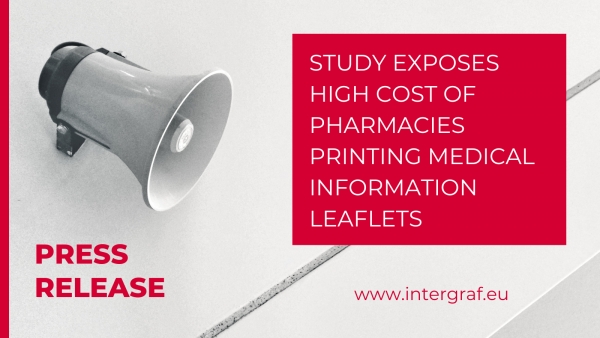25 June 2009
Printing press guarding - safety alert
This alert has been drawn up by the BPIF and Unite to provide information and advice on a recent accident in the printing industry. It does not seek to attribute blame in any way, and is based on information current at the time of the alert. This accident is still under investigation and therefore it is possible that additional information may become available at a later date.
The Incident
On the morning of Tuesday 6th May 2009 a 49-year-old man's arm was dragged into a printing press while he was operating the first unit of a four colour, Heidelberg Speedmaster 72 VP press. His arm was drawn into the press between the plate cylinder and the inking roller.
Emergency services were unable to free the injured person's arm and therefore, doctors decided to amputate his arm at the scene of the incident.
The incident is currently being investigated by the Health and Safety Executive (HSE) and information is limited as it is in the early stages of the investigation. However, the HSE has confirmed that a Notice to Leave Undisturbed had been served on the company.
The injured person was working alone and there were no direct witnesses to the accident. However it is believed that he may have been trying to remove a hickie from the rotating plate, using a stiff piece of card, while the machine was at operating speed.
It is believed that the guarding of the machine was inadequate, and that at each print unit the extension guard which normally sits below the "guard in front of the inking unit at the feeder side" was missing.
According to Heidelberg the following guarding arrangement should be in place on this type of machine:
Guard between dampening and inking rollers
Subsequent to lifting this guard it has to be hooked onto the closed guard. Thus both hands are free to insert/remove rollers. When opened the press can neither be inched nor run. This guard is designed in such a way that hickies can be removed from the plate while the press is in operation using a specially designed tool.
It appears that this machine was in operation with a guard missing at feed side of each print unit. The machine had probably been in this condition since it was installed second-hand in about 2003.
Further investigations by local and specialist HSE Inspectors are taking place. Normal operation of the machine will not be permitted until it is fully guarded and safe to operate.
The BPIF and Unite strongly recommend that all employers or those who are responsible for the safe operating of offset litho presses ensure the following points have been followed, or form part of their internal Risk Reduction Programmes (RRP).
1. Ensure there is an up-to-date activity based risk assessment for any physical intervention in setting, operating, cleaning and maintenance of offset litho presses relating to the feeder running nip area.
2. Ensure that there are specific documented Safe Systems of Work (SSW) for access to cylinders and inking rollers during cleaning, make ready and maintenance tasks.
3. Review your current guarding standards on all feeder and extension guards and consult with your safety representations (if applicable) and/or machine operatives.
4. Ensure you have stringent standards for the monitoring and auditing of all press guards, to ensure that all guards are working effectively and in sound condition to meet their requirements.
5. Carry out a review of your training arrangements to ensure that all operatives are fully trained and aware of the purpose of press guards, the SSW that should be adopted when running or inching the press units.
6. Carry out a review of your current supervision arrangements that supports your risk reduction programme.
Supporting legislation and guidance
Provision and Use of Work Equipment Regulations (PUWER) 1998
‘Printers Guide to Health and Safety' (second edition) ISBN 0-7176-2267-3
Or contact your local BPIF/Unite Health and Safety Adviser or Press Manufacturer for further advice.
Please Note: None of the aforementioned points neither implies nor confirms that these were contributing factors in the above incident, they are merely standard controls that companies should be following.
‘Chapel Action'
Chapels should ensure that:
• the attached alert (or the above information) is brought to the attention or relevant employers, and that the advice given is implemented in full
• all print machines are properly guarded, in line with manufacturers' instructions
• particular attention is paid to machines that have been supplied second-hand
• Check that you are compliant with points 1-6 of this alert
 Intergraf Economic News (Paper Prices) - March 2024
Intergraf Economic News (Paper Prices) - March 2024
18 March 2024
Access the latest edition of the Economic Newsletter for the European Printing Industry for data on paper consumption, and pricing data for pulp, paper and recovered paper. Data for packaging papers and board is also available with this edition.
 STUDY EXPOSES HIGH COST OF PHARMACIES PRINTING MEDICAL INFORMATION LEAFLETS
STUDY EXPOSES HIGH COST OF PHARMACIES PRINTING MEDICAL INFORMATION LEAFLETS
7 March 2024
Intergraf welcomes the release of a study by our partner MLPS (Medical Leaflet = Patient Safety), a subgroup of the European Carton Manufacturers Association (ECMA) shedding light on the potential economic costs associated with the proposed use of Print on Demand (PoD) leaflets in the pharmaceutical legislation revision.
The BPIF is the printing industries champion. By becoming a member you join a diverse and influential community. We help you solve business problems, connect you to new customers and suppliers and make your voice heard in government.
Call 01676 526030









